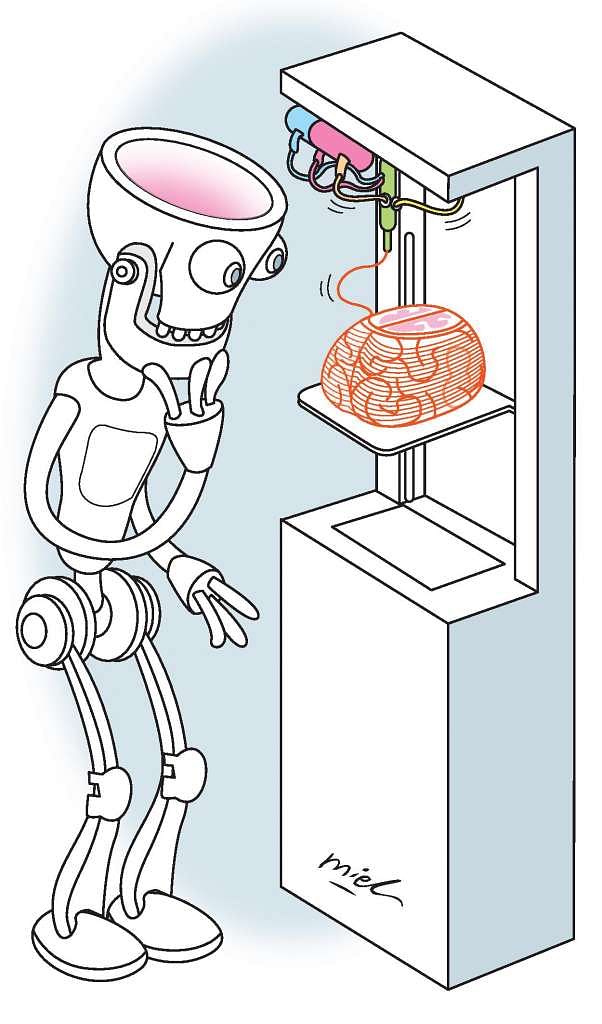Additive manufacturing (AM) or 3D printing, as it is more commonly known, is a term that is becoming more familiar, used not only by large corporations and institutions but also smaller enterprises and even individuals.
Simply put, 3D printing refers to processes that produce a 3D part from a computer-aided design model by adding materials successively, usually in a layer-by-layer fashion. These materials can be made of paper, plastic, metal or even organic materials such as tissue from cells.
3D printing in itself is not new. It has been used for over three decades, such as for printing out prototypes for designs or architectural works. But today, its usage has expanded beyond prototyping. Many industries and people now use 3D printing to make things they want, which include producing unmanned aerospace vehicles (UAVs) used in Aerospace and Defence.
As technology continues to develop and become more widespread, we are led to potentially discover new or more extensive benefits to society. In building and construction, the ability to print complicated design structures within a shorter time and with fewer resources would help to reduce housing shortage in countries like Singapore. Globally, this could also help disaster-struck countries to quickly rebuild affected communities.

Due to its game-changing potential, AM or 3D printing is forecast by The Economist magazine to be the third Industrial Revolution.
Today, manufacturers are already witnessing the positive impact of 3D printing technology in terms of enabling greater customisation while reducing costs and waste.
As products are manufactured on demand, this reduces tooling costs and the need to maintain
a massive product inventory typical of traditional manufacturing methods.
From a business perspective, we also see companies evolving towards more flexible and cost-effective business models. Some may choose to focus solely on design and leave customers to manufacture the actual product. Conversely, smaller players can now manufacture their own products instead of relying on larger manufacturing chains. Along with lower investment costs and risks, this has opened doors and created opportunities for new entrants within the manufacturing field. These will shake up manufacturing as we know it today.
Companies that now produce spare parts or equipment for big manufacturers may find themselves squeezed out if the manufacturers find it more worthwhile to 3D print the parts themselves.
Shipping too can change, if ships carry their own 3D machines to print parts, or 3D print their own supplies, eliminating the need to stop at ports for repairs and resupplies.
Even space travel can be revolutionised: One exciting area of potential application is 3D printing in space, which can be used to produce necessities such as food as well as essential tools and spare parts necessary for extensive space missions.
Over the coming decades, 3D printing technology certainly has tremendous potential to revolutionise our next phase of development.

The promise of bioprinting - or the printing of live tissue - is immense. This potentially allows us to 3D print a new organ for transplant. Bioprinting has the eventual goal of improving the quality of life whether for transplant patients or for society at large.
It also has clear applications in food. After all, 3D printing allows us to produce meat for consumption by printing them with layers of animal tissue - without the need for animal husbandry or slaughter.
Bioprinting food will also minimise the risk of diseases such as mad cow disease or bird flu by eliminating the need to rear livestock for human consumption.
With the aim of empowering the average home user, the Blacksmith Group invented the Blacksmith Genesis, the world's first 3D printer-cum-scanner. As compact as a home printer, the Blacksmith Genesis allows users to scan, edit and print any item up to 6,650 cubic cm in 3D easily. This user-friendly device enables users without much knowledge of 3D software to engineer their own products.
The Blacksmith Group is a spin-off from the Nanyang Technological University's (NTU) newly established Singapore Centre for 3D Printing (SC3DP).
Supported by Singapore's National Research Foundation, SC3DP was set up to drive research and collaboration towards growing Singapore's 3D printing capabilities for the aerospace and defence, building and construction, marine and offshore and manufacturing industries.
Taking it one step further is 4D printing, which refers to the printing of three-dimensional materials with properties that will transform according to external or environmental stimuli, such as time, temperature or humidity.
Possible applications that would prove useful are using it to print the soles of shoes or sofas which can then be easily manipulated to fit the shapes and sizes of human bodies.
4D printing might also be useful for printing structures for transporting across dramatically different environments, such as from earth to space. In this case, imagine if we could print a piece of furniture in a compact format that can be subsequently assembled into a larger, complex structure in space.
Given the rate at which 3D printing technology is progressing, it is not difficult to envision that 50 years from now, we could be living in 3D printed houses, travelling on 3D printed airplanes, wearing 3D printed garments, consuming 3D printed food and much more.
The possibilities are limitless.
- Professor Chua Chee Kai is the Executive Director, Singapore Centre for 3D Printing, at the School of Mechanical and Aerospace Engineering, Nanyang Technological University.

